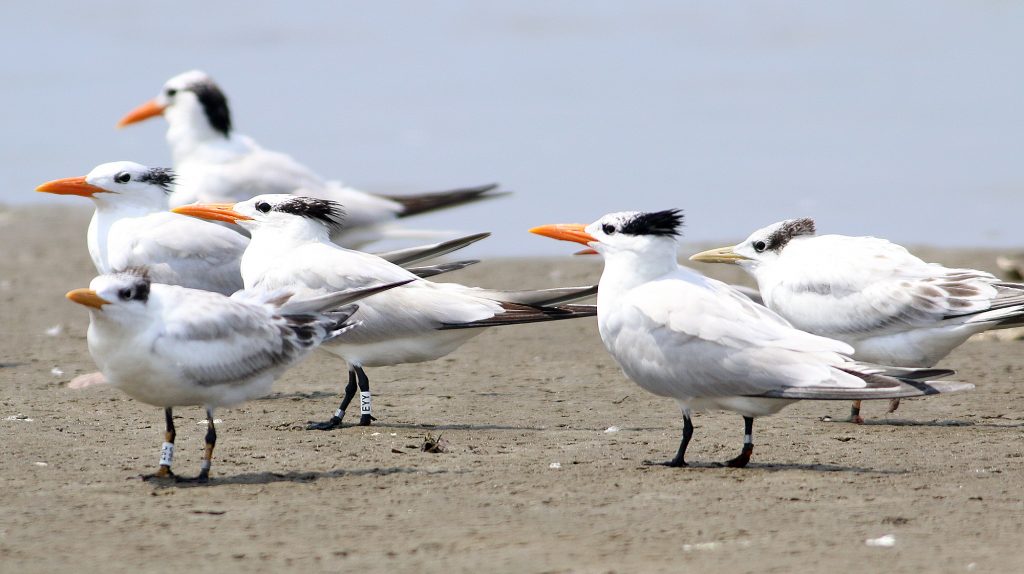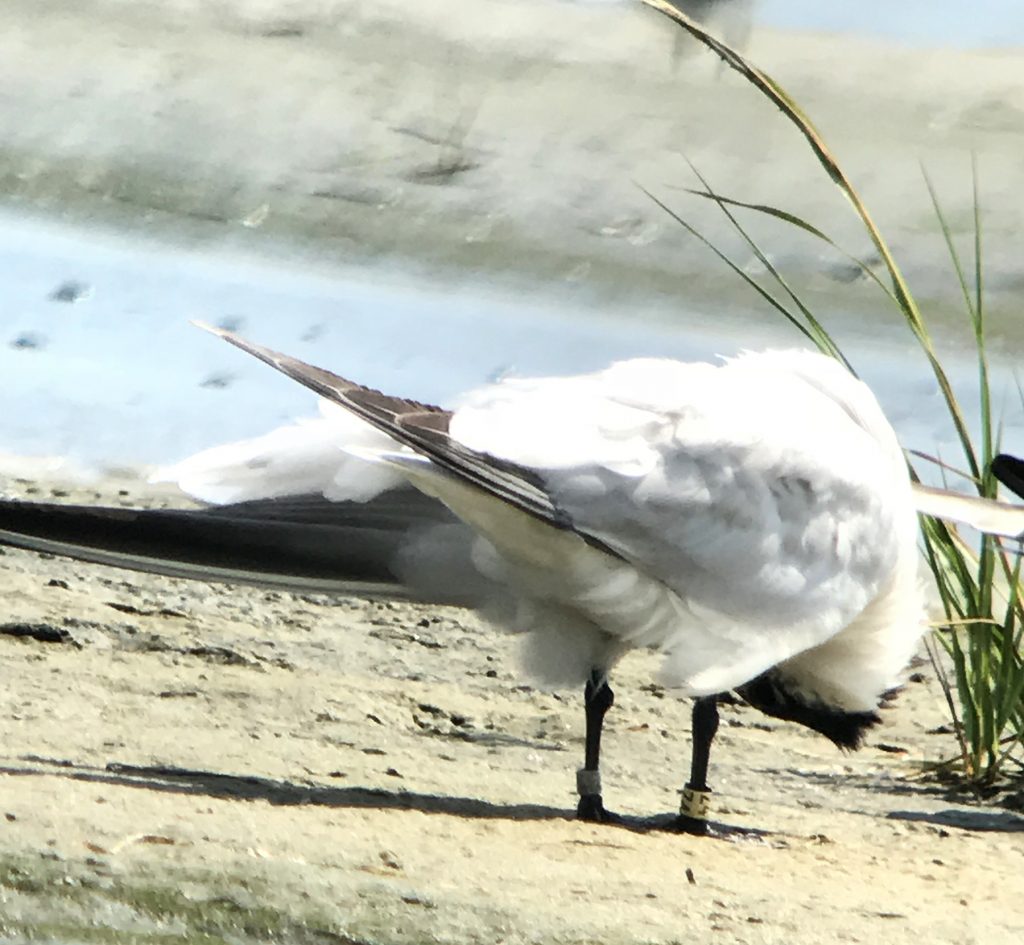The parade of banded terns continues here in the Sedge Islands. The first banded Royal Terns that I have ever seen started arriving August 6, and they have continued appearing as the season progressed. So far 23 different Royal Terns have been observed here. Some appear just once, while others have remained for the past month. Nearly all of these terns were banded at Hampton VA on July 7 of this year (a day when 2,500 Royal Terns were banded there!), with one tern having been banded in 2016 at the same site, and another one (EYY) was banded in Ocean City MD in 1998! Wow. I didn’t know that Royal Terns survived for that long. According to Birds of North America, the oldest know Royal Tern survived for 30 years. Hey, maybe EYY will some day become the new record-holder.

Royal Tern EYY, which was banded 20 years ago in Ocean City MD. It looks pretty darn good for its age. The bird in front of it (29C) was probably an offspring, as they interacted often.
After the Royal Terns arrived, they were followed by an increase in Caspian Terns. We don’t get nearly as many Caspians as Royals here (our highest count this year for Royals was 94, and for Caspians our high was 15), but I was thrilled to find our first-ever banded Caspian Tern last week. This bird (Z4) was banded in 2010, 306 miles away from where we spotted it, at Little Galloo Island, which is on the eastern end of Lake Ontario, within NY waters. This info was in agreement with my understanding that the Caspians that pass through our area are on their way to breed in the Great Lakes region. This is why we occasionally see Caspian Terns in the larger inland lakes during migration periods, while Royal Terns are nearly always coastal. It’s reassuring when the information that we gather ourselves coincides with what is in the field guides.

I know it is not a great photo, but here is our Caspian Tern Z4, banded 10 years ago in Lake Ontario.
The addition of spotting a banded Caspian Tern completes a trio of tern species that we have found banded this year, starting with Roseate Terns, followed by Royals, and now Caspians. Now if we could only find our target Sandwich Tern for the season.